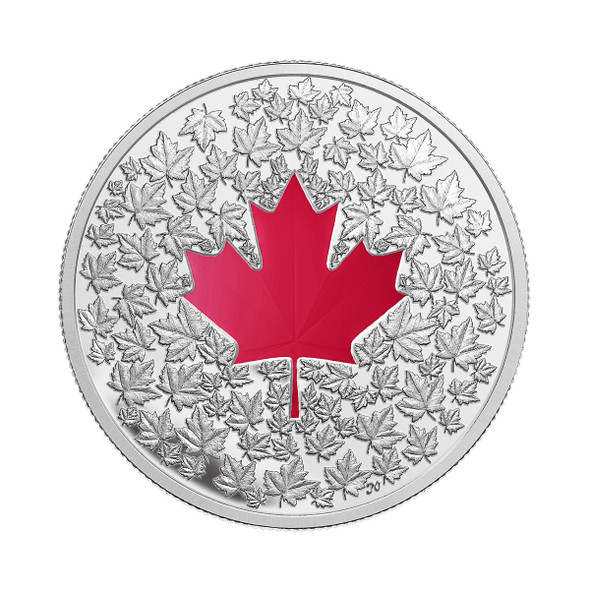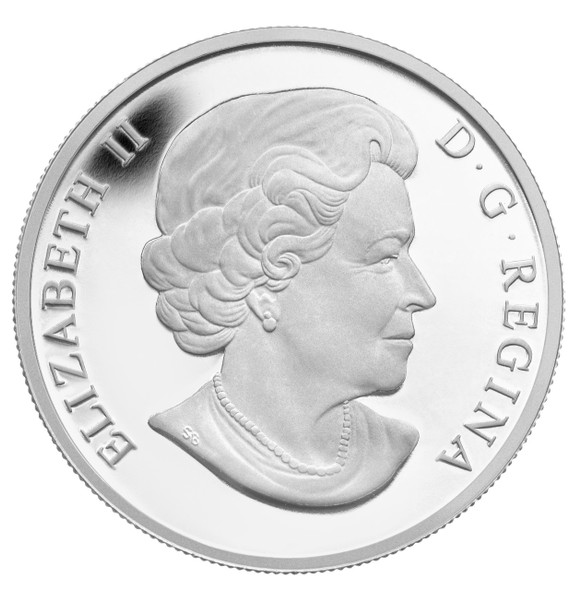Description
Theme:
2013 Maple Leaf Impression
Valour, perseverance, diversity: the maple leaf is a powerful symbol of Canadian identity and values. Internationally recognized, the maple leaf has been a Canadian emblem for almost three hundred years.
Description:
This coin is certified to be 99.99% pure silver with a diameter of 27 millimetres and a weight of 7.96 grams.
The reverse image by Royal Canadian Mint engraver José Osio features the impression of a hidden maple leaf amongst much smaller maple leafs.
The obverse is engraved with the word “CANADA”, the date “2013”, the face value of “3 DOLLARS” and features the effigy of Her Majesty Queen Elizabeth II by Susanna Blunt.
Special Features:
- A select addition to any coin collection that celebrates not only the robust Canadian spirit, but also the exceptional craftsmanship offered by the Royal Canadian Mint.
- Over 100 maple leafs are captured within this coin!
- This fine silver coin highlights the beauty and variety of the iconic maple leaf.
- Transform this coin into a necklace when you purchase a pendant kit (115218). A unique souvenir!
Product Specifications:
Face Value: 3 dollars
Composition: 99.99% pure silver
Weight (g): 7.96
Diameter (mm): 27
Edge: Serrated
Finish: Proof
Certificate: Serialized
Artist: José Osio
Packaging:
The coin is encapsulated and presented in a Royal Canadian Mint branded maroon clamshell case lined with flock and protected by a black sleeve.
Advertising Date: June 4, 2013
Launch Date: June 11, 2013
Complete Certificate Text:
Emblem of a Nation’s Spirit
From backpackers in Berlin to peacekeepers in Pakistan, Canadians are immediately identifiable by a singular image they faithfully sport on pins, badges, and appliqués: the red maple leaf.
This lyrical cipher has symbolized Canada and Canadians for nearly three hundred years. Historians generally recognize the adoption of the maple leaf by Quebec’s Société Saint-Jean-Baptiste in Montréal in 1836 as the first official use of the symbol to represent an element of Canadian culture.
The symbol was soon popularized in print, song, and in the small markers—such as lapel pins—with which Canadian residents of various origins honoured their homelands. The English had their roses, the Scots their thistle, the Irish their shamrocks, and the French their fleur-de-lis—and native-born Canadians quickly chose the prosaic maple leaf.
The idea of including the maple leaf on Canada’s national flag took root with Lester B. Pearson in World War I, when he noted that every Canadian battalion had included some form of the maple leaf in its insignia. Fifty years later, in 1965, under his leadership as prime minister, Canada’s famous red-and-white maple leaf flag was born.
In addition to the maple leaf’s presence on various provincial flags and coats of arms, the country’s coinage has featured maple leaves, wreaths, and boughs in various forms for most of Canada’s history. In fact, the maple leaf was present on all Canadian coins from 1876 to 1901, and on Canadian pennies until
















